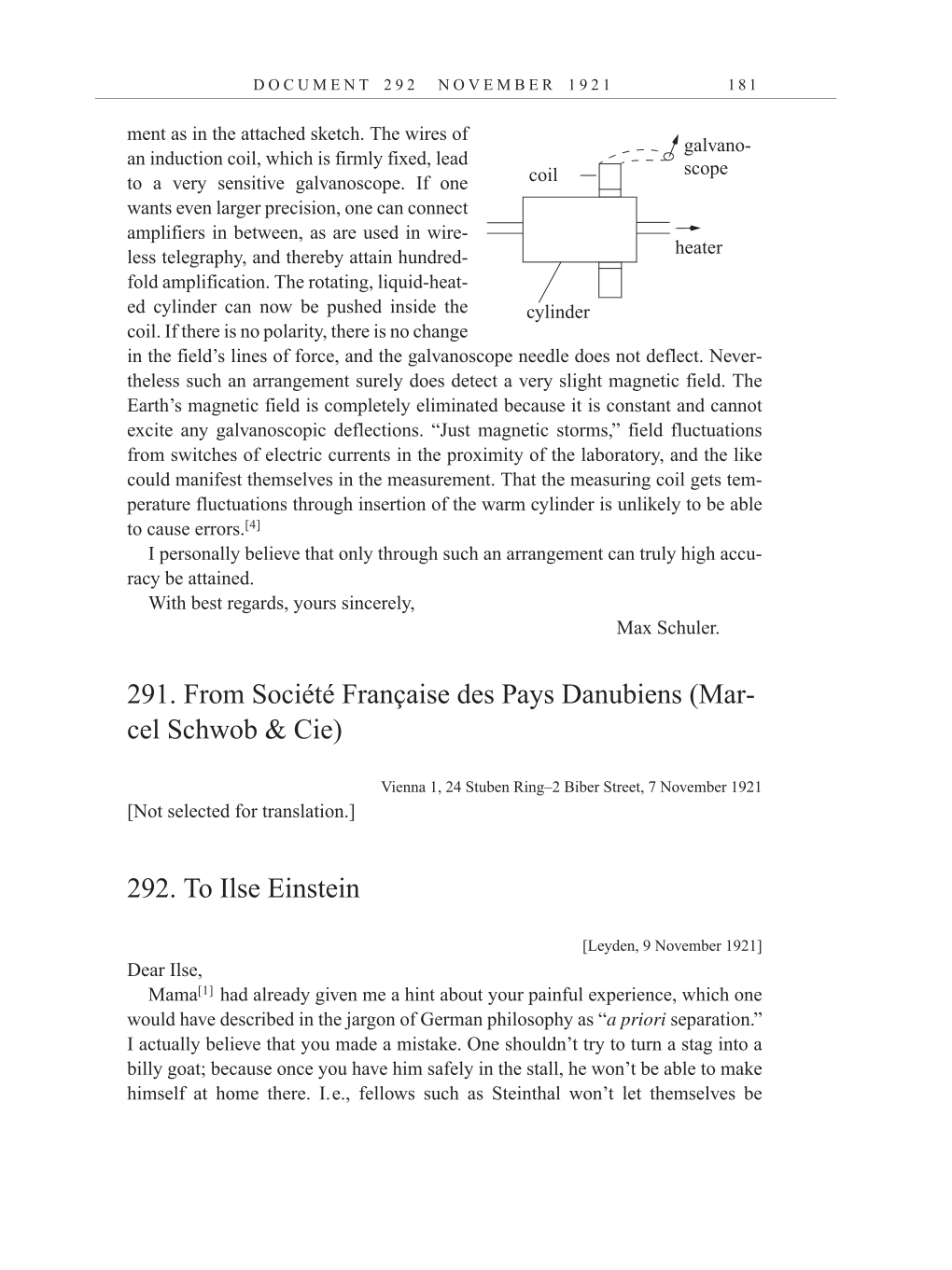D O C U M E N T 2 9 2 N O V E M B E R 1 9 2 1 1 8 1
ment as in the attached sketch. The wires of
an induction coil, which is firmly fixed, lead
to a very sensitive galvanoscope. If one
wants even larger precision, one can connect
amplifiers in between, as are used in wire-
less telegraphy, and thereby attain hundred-
fold amplification. The rotating, liquid-heat-
ed cylinder can now be pushed inside the
coil. If there is no polarity, there is no change
in the field’s lines of force, and the galvanoscope needle does not deflect. Never-
theless such an arrangement surely does detect a very slight magnetic field. The
Earth’s magnetic field is completely eliminated because it is constant and cannot
excite any galvanoscopic deflections. “Just magnetic storms,” field fluctuations
from switches of electric currents in the proximity of the laboratory, and the like
could manifest themselves in the measurement. That the measuring coil gets tem-
perature fluctuations through insertion of the warm cylinder is unlikely to be able
to cause
errors.[4]
I personally believe that only through such an arrangement can truly high accu-
racy be attained.
With best regards, yours sincerely,
Max Schuler.
291. From Société Française des Pays Danubiens (Mar-
cel Schwob & Cie)
Vienna 1, 24 Stuben Ring–2 Biber Street, 7 November 1921
[Not selected for translation.]
292. To Ilse Einstein
[Leyden, 9 November 1921]
Dear Ilse,
Mama[1]
had already given me a hint about your painful experience, which one
would have described in the jargon of German philosophy as “a priori separation.”
I actually believe that you made a mistake. One shouldn’t try to turn a stag into a
billy goat; because once you have him safely in the stall, he won’t be able to make
himself at home there. I.e., fellows such as Steinthal won’t let themselves be
coil
galvano-
scope
heater
cylinder
